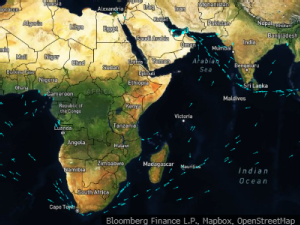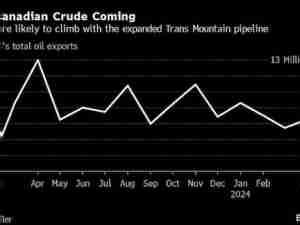Algeria’s government intends taking advantage of an oil and gas bonanza to more than double its spending next year, with the military, civil service and the jobless among the biggest beneficiaries.
A jump in energy prices spurred by Russia’s invasion of Ukraine shored up the former French colony’s coffers, giving the government more scope to cushion citizens against surging living costs and ward off social unrest. In March, Algeria became one of the first African countries to introduce a permanent unemployment-benefits program for the youth, an initiative that now looks set to be extended.
A draft law presented to parliament’s finance committee last week and seen by Bloomberg foresees state expenditure rising to about 13,786 trillion dinars (about $96.9 billion) in 2023, from 6,311 trillion dinars this year. Revenue is only projected to rise 39% to about 7,901 trillion dinars, leaving a yawning budget deficit. It’s unclear how it will funded given the government’s historic reluctance to take on foreign debt.
The defense budget is projected to jump to 3,186 trillion dinars in 2023, from 1,300 trillion dinars this year. The proposed increase comes amid unrest in Libya, jihadist violence in the broader Sahel region and rising tensions over disputed Western Sahara. Neighboring Morocco claims sovereignty over the territory, a stance Algeria opposes.
The draft law allocates 1,021 trillion dinars to the Ministry of Labor and Employment, an almost six-fold increase from this year. That will enable it to fund raises for state workers, increase pensions and expand the unemployment benefit announced by President Abdelmadjid Tebboune that enabled about 580,000 job-seekers between 19 and 40 years of age to claim monthly payments of 13,000 dinars.
The finance bill forecasts the North African nation’s economy expanding 4.1% next year, up from 3.7% in 2022, with inflation easing to 5.1%, from 7.7%.
Other highlights:
- Algeria’s foreign exchange reserves are expected to reach $54.6 billion by the end of 2023, sufficient to cover 14.3 months of imports.
- The draft budget is based on a so-called reference oil price of $60 a barrel and a market price of $70 a barrel.
- Oil and gas exports are expected to be $38.8 billion in 2023, versus $49.5 billion this year.









